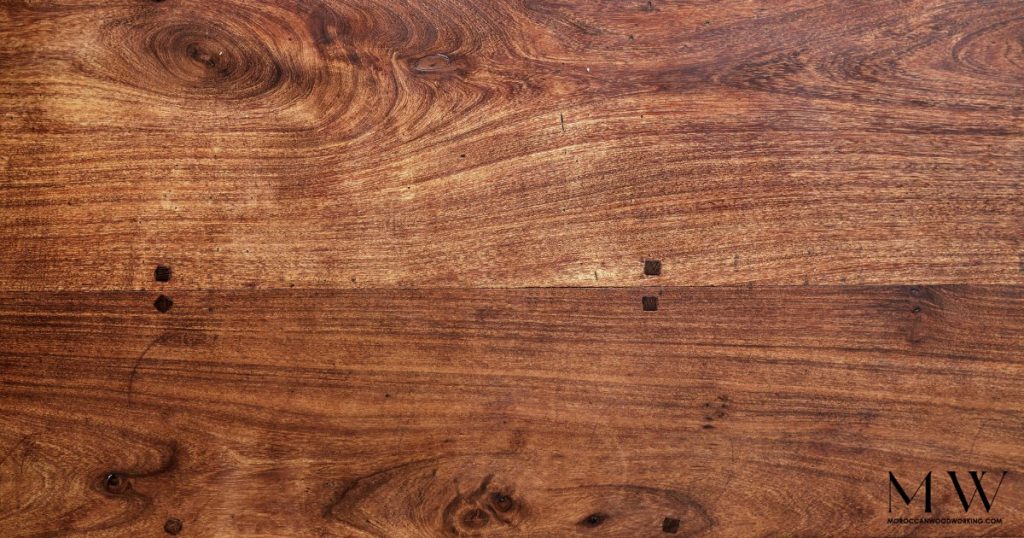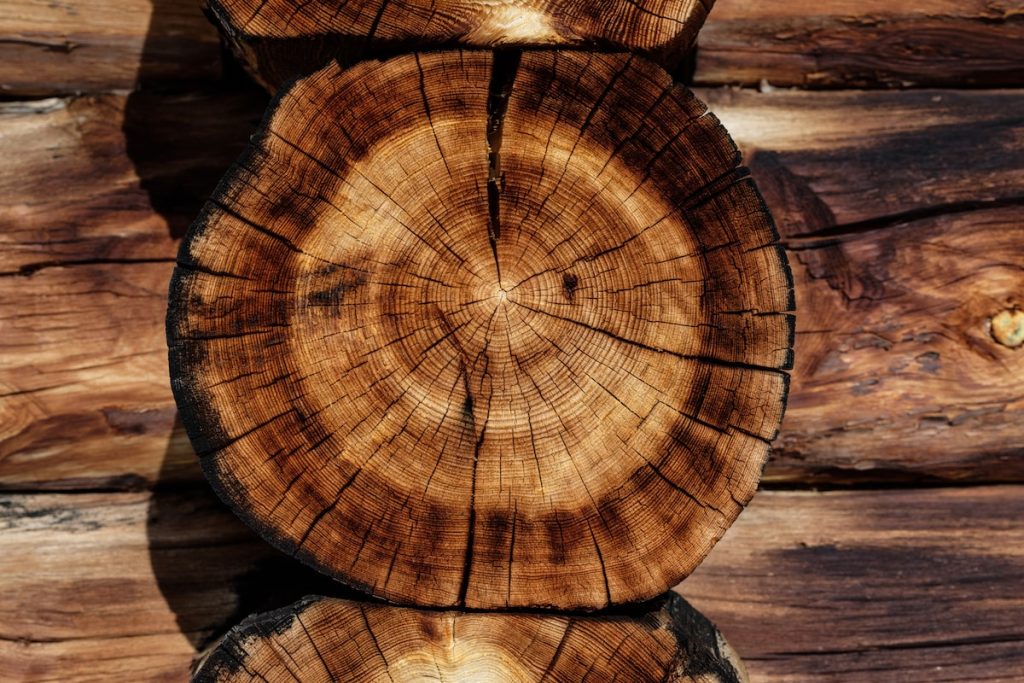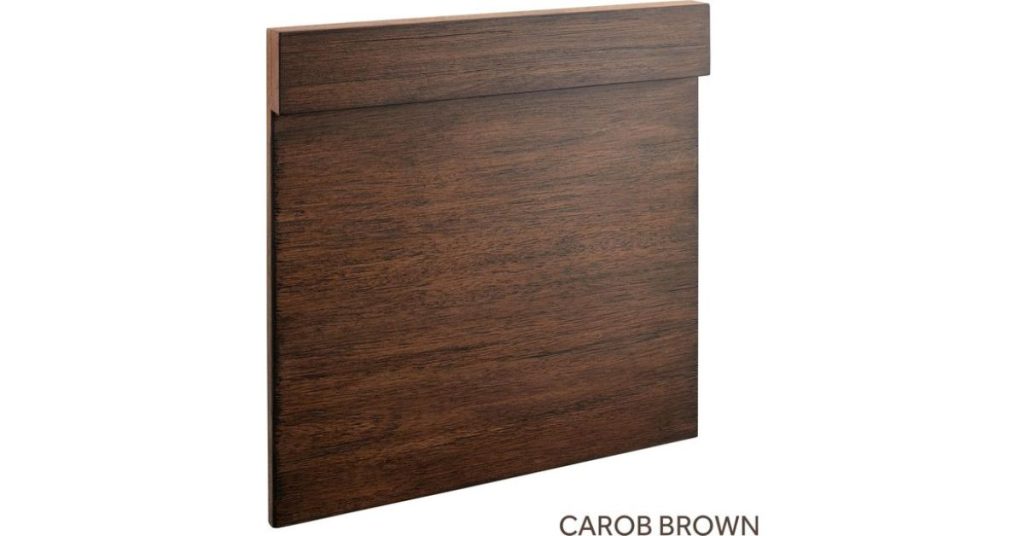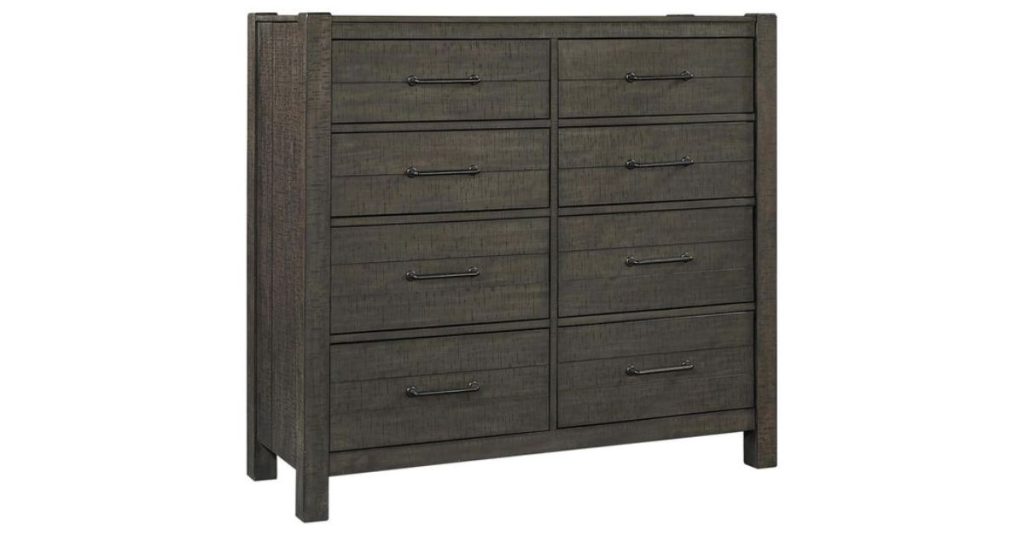Carob Wood Versus All Other Woods: A Comparison For Furniture Making

When it comes to furniture making, there is no denying that the type of wood used makes a big difference in the final product. With so many options out there, choosing between them can be overwhelming. However, one wood stands out from all others: carob wood. For those considering its use for their next piece of furniture, this guide provides an overview of carob pods, their characteristics, and how they compare with other woods commonly used for furniture-making.
Carob wood has long been favored among experienced craftsmen due to its unique properties and durability. Not only does it have excellent resistance against insect infestations, but it also boasts impressive levels of strength and stability even when exposed to extreme temperatures or humidity changes. Furthermore, carob’s grain structure gives it pronounced visual appeal – something that can make a piece stand out from the rest!
When comparing carob wood with other common woods used for furniture making such as oak, walnut, and maple, you will undoubtedly find advantages and disadvantages depending on your project’s needs – but overall carob remains at the top of our list. In the following article, we take a closer look at these different types of wood and provide insight into which might be best suited for your particular project.
Definition Of Carob Wood
Carob wood is an exotic hardwood that comes from the carob tree, native to Mediterranean regions. It’s characterized by its light brownish-red color and attractive grain pattern, making it a popular choice for furniture makers. The trees can grow up to 20 meters in height and have a lifespan of over 150 years. Carob wood has excellent properties such as being highly durable and resistant to decay, which makes it ideal for outdoor furniture. Its density also makes it great for cutting and shaping into intricate designs. In addition, carob wood is relatively easy to work with compared to other woods due to its low shrinkage rate when drying out. This means less warping or splitting during fabrication processes.
Carob wood has many advantages for creating high-quality furniture pieces; however, there are some drawbacks too. One of these is its cost – since carob is not produced on farms like other woods, prices tend to be higher than those of more common varieties. Additionally, because of its slow growth rate, supply can often be limited and difficult to come by at times. Finally, despite being extremely durable outdoors, carob wood does require regular protection from moisture if used indoors, otherwise, it may rot or warp quickly over time.
Overall, carob wood offers unique benefits that make it suitable for a range of applications in furniture-making projects–from luxury indoor items to robust outdoor structures. Its combination of strength and beauty along with sustainable tree sourcing ensures that this sought-after material remains an attractive option for discerning craftsmen all around the world
Properties Of Carob Wood
Carob wood is an excellent choice for furniture making. Its properties make it a highly desirable material, which can be used to craft beautiful and lasting pieces of furniture. It has remarkable durability, as its density ensures that it won’t warp or crack over time.
In addition, carob wood’s light weight makes it easy to work with and transport, yet still strong enough to withstand heavy use. As far as strength goes, this type of wood is comparable to oak when properly treated; however, the cost of carob is typically much lower than other hardwoods. This makes it a great option for those who want high quality without breaking the bank.
Furthermore, carob wood has good shock resistance, so furniture made from this wood will be less likely to suffer damage if knocked around in transit or during everyday activities. All these factors combine to make carob wood an ideal choice for creating long-lasting and stylish furniture pieces at an affordable price.
Advantages And Disadvantages Of Carob Wood
As the sun sets on a long day of crafting, one thing is clear: carob wood has an undeniable appeal. With its beautiful grain and natural resistance to insects, it’s no surprise that this type of wood often graces furniture makers’ workshops. But what about other woods? Is carob superior for furniture making? To answer this question, let’s compare some of the advantages and disadvantages of carob versus other types of wood.
To begin with, carob wood is known for being strong yet lightweight – a perfect combination when creating large pieces like tables or bookshelves. And while cost may be an issue with some exotic hardwoods, carob offers excellent value due to its abundance in many regions. The durability and strength of the carob make it ideal for outdoor furniture as well; it won’t warp or crack easily under extreme conditions such as high humidity or temperature changes. In addition, the unique properties of this timber mean that finishes applied to your creations will stay vibrant longer than those finished with other materials.
When it comes to drawbacks, there are a few worth noting. Carob can experience cracking if not properly seasoned before use – something all skilled craftsmen take into account before beginning any project! Furthermore, if you’re hoping for truly intricate detailing within your design then another type of wood might better suit your needs since carving and shaping aren’t easy with carob due to its density. Last but not least, although carob is relatively affordable compared to certain exotics, inexperienced crafters should keep in mind that it still requires more skill (and sometimes special tools) which may add additional expense upfront.
In summary then, carob wood makes an excellent choice for furniture makers who appreciate strength along with affordability – especially when working on larger projects where weight plays an important role. It also holds up superbly outdoors thanks to its robustness against weathering forces so don’t hesitate to put it through its paces! However do bear in mind that added care must be taken during preparation plus more advanced techniques may be needed depending on the complexity desired within your piece – so choose wisely!
Other Wood Types
Photo by Joel & Jasmin Førestbird on Unsplash
When it comes to furniture making, several different kinds of wood can be used. Teak wood is one of the most popular due to its durability and strength; walnut wood offers an attractive grain pattern with rich coloration; mahogany has a distinctive reddish hue and is prized for its beauty; pine wood is considered by many as the best option for less expensive pieces; and oak wood provides excellent stability. While all these woods have their unique benefits, they each come with their drawbacks too.
Teak wood may provide long-term durability but it’s also extremely heavy and can be difficult to work with. Walnut wood looks great but in some cases, knots or timber defects can reduce its overall appeal. Mahogany usually has a higher price tag so not everyone can afford it. Pinewood tends to warp easily when exposed to moisture while oakwood requires regular maintenance if you intend on keeping it looking good over time.
Although carob wood isn’t as well known as some other types of lumber, it still should be taken into consideration when selecting materials for furniture-making projects. Unlike teak, walnut, mahogany, pine, and oak woods – which could potentially contain hidden flaws – carob lumber boasts consistently high quality throughout every piece. It’s strong enough to support heavier loads yet lightweight at the same time – perfect for those who don’t want something bulky taking up space in their home or office environment. Additionally, carob doesn’t require any extra treatment after purchase thanks to its natural resistance against rot and decay from humidity levels indoors or outdoors.
For anyone looking for top-notch craftsmanship without sacrificing style or quality, carob wood should be given serious consideration before opting for another type of timber material instead. Not only does this type of lumber offer superior performance compared to other varieties of hardwoods available today but it also makes sense financially since you won’t need additional treatments or repairs down the line like you would with other options out there on the market right now.
Advantages And Disadvantages Of Other Woods
Photo by Gabriel Jimenez on Unsplash
When it comes to furniture making, other types of wood are often compared to carob wood due to their various advantages and disadvantages. While the properties of each type of wood vary, understanding the benefits and drawbacks of using these woods can help you make an educated decision regarding which is best for your project.
Advantages:
- Wood Cost: Depending on the type of other wood used, the cost may be a key factor when selecting a material. Woods such as pine or cedar offer more affordable options than more expensive hardwoods like mahogany or walnut.
- Strength: Otherwoods such as oak provide excellent strength and durability that give them great potential in furniture-making projects.
- Versatility: There are many different varieties of other woods available with varying colors, grains, textures, and finishes that allow a wide range of possibilities for customizing your piece.
- Weight: Certain types of other wood are much lighter than carob wood, making them easier to transport and assemble into pieces that require intricate designs.
Disadvantages:
- Durability: Many other kinds of wood do not have the same level of durability as carob wood, so they may need to be treated with protective sealants to maintain their integrity over time.
- Limited Availability: Some rarer species of other wood may have difficulty sourcing due to limited availability in certain areas or countries.
- Warping Potential: Although some woods have naturally occurring resins that reduce warping potential, others may suffer from excessive shrinkage or swelling over time if exposed to humid conditions without proper maintenance or protection.
- Finishing Options: When finishing certain types of other wood, there may be fewer choices available since they often cannot absorb stains and paints as easily as carob wood does.
The number one consideration when choosing between carob wood versus all other woods should always be how well it meets your specific needs based on its properties, cost, strength, and versatility—all factors worth weighing before finalizing your selection for carob pod for any given project.
Strength Comparison
When considering the strength comparison between carob wood and other woods for furniture making, it’s important to consider the different types of sources. Carob wood is a hardwood, meaning it can hold up well against wear and tear over time. It has a high density, which makes it strong and durable. On the other hand, softwoods are not as dense or strong as hardwoods like carob wood. When looking at overall strength comparison in terms of weight-bearing capacity, carob wood will have an advantage over softer woods due to its higher density.
In terms of impact resistance – that is, how much force must be applied before it breaks – both types of wood perform similarly when exposed to moderate forces such as bumps from chairs or tables. However, if more significant impacts are applied – such as jumping on furniture pieces – then carob wood will outperform all other woods due to its greater density and stability.
It’s also worth noting that carob wood tends to age better than other materials used in furniture production; this means that while some woods may become brittle after exposure to sunlight or moisture over time, carob wood remains relatively stable even with prolonged use. This makes it ideal for outdoor applications where durability and longevity are essential considerations for furniture makers.
Overall, when comparing strength differences between carob wood and other materials commonly found in furniture manufacture, carob stands out as being significantly stronger and more durable than any other type of material available today. Its superior properties make it an excellent choice for anyone who wants their furniture pieces to last longer without showing signs of deterioration or damage from normal use.
Durability Comparison
At times of old, carob wood was praised for its strength and durability when used to make furniture. This characteristic has been retained by the wood even in modern days, making it a top choice amongst many woodworking professionals. When compared with other woods, carob stands out due to its particularly hard nature and resistance to warping or splitting.
The density of the carob is one factor that contributes to its durability; in fact, this particular type of timber is among the densest of all commonly used woods. It also holds up fairly well against impacts and scratches, while being able to retain its shape over time without much maintenance required from owners. Therefore, those looking for sturdy pieces can be sure that using a carob will result in some long-lasting furniture items.
Another point worth noting about carob is that it does not absorb moisture easily; as such, there’s less chance for molding or rotting than with softer types of wood like pine or oak. Its natural oils also provide extra protection against pests or fungi infestations – another benefit over alternative materials available on the market today.
Overall, carob provides an excellent option for those needing reliable yet aesthetically pleasing furnishings. Its ability to withstand the test of time makes it a great investment piece that could last generations if well cared for! With no shortage of variety in terms of grain patterns and colors, this particular kind of timber offers something special whatever your style may be.
Weight Comparison
Moving on from the durability comparison of carob wood and other woods, let’s take a look at their weight. Wooden weight is an important factor when it comes to furniture making as heavier pieces of wood can affect how easily they are moved or transported.
When comparing the weight of carob wood with that of other woods, we find that carob wood has a slightly higher density than many other popular types of wood used in furniture making such as oak, cherry, and walnut. This means that it takes more effort to move around compared to these lighter types of wood and care must be taken while handling it. However, its added strength makes up for this disadvantage in certain situations where sturdiness is desired over lightness.
Another aspect to consider is whether there are any differences between air-dried carob chips and kiln-dried carob when looking at their respective weights. The answer here is yes: kiln-dried carob usually weighs less due to the moisture having been removed during the drying process which results in a decrease in overall mass per volume unit. As such, if you need to use lighter pieces of carob for your next furniture project, then kiln-dried would be the way forward!
Overall, although heavier than some other varieties of timber used in furniture making, the extra strength provided by using carob wood outweighs this slight disadvantage when strength is required over portability – leaving us with no doubt that it’s still one of the best choices out there for quality furniture pieces!
Frequently Asked Questions
How Long Will Furniture Made With Carob Wood Last?
When it comes to furniture making, carob wood is known for its durability and longevity. On average, furniture made from carob wood can last for over a century – that’s more than 100 years! This makes carob an ideal choice if you are looking for long-lasting pieces of furniture.
Carob wood has the potential to outlast other types of wood with ease when used in furniture crafting. It’s not uncommon to find antique furniture crafted from this type of wood still standing strong today. Many experts believe that carob is one of the most durable materials available on the market right now. Its resilience allows it to withstand everyday wear and tear better than other varieties.
The key factor behind the impressive lifespan of carob wood lies in its unique properties: dense grain patterns, high oil content, and natural resistance to pests or rot make this particular material extremely tough and reliable. All these features contribute towards superior quality carpentry work which will remain intact over time – something any experienced craftsman would appreciate.
Whenever you’re considering buying wooden furniture for your home, think about investing in pieces made from carob wood. You’ll be sure to get your money’s worth as these items will stay with you for generations without compromising their original look or structure!
What Type Of Maintenance Is Required For Carob Wood Furniture?
When it comes to furniture making, carob wood is a popular choice for its unique properties and aesthetic. However, like all woods used in furniture making, certain maintenance requirements must be followed to ensure the longevity of the piece. In this article, we will discuss what type of maintenance is required for carob wood furniture.
Wood furniture requires regular care and attention to prevent damage from occurring due to wear or environmental conditions such as temperature changes. Carob wood has specific needs when it comes to upkeep, so understanding these guidelines can help keep your carob wood furniture looking beautiful for years to come.
The most important aspect of maintaining carob wood furniture is moisture control. Excessive exposure to water and humidity can cause warping and cracking, resulting in costly repairs down the line. To protect against this kind of damage, make sure you use coasters under drinks on any surface made with carob wood, wipe up spills quickly and clean surfaces regularly using a damp cloth or soft brush. Additionally, keep the area where your carob wood pieces are stored at an even temperature—extreme swings in temperature can also lead to cracks forming over time.
Cleaning should only ever be done with products specifically designed for cleaning wood furniture; harsh chemicals or abrasive agents could strip away protective finishes or stain the finish itself. You may want to apply a wax or polish every few months if desired; however, it’s not necessary unless you plan on storing your furniture outside for long periods (this isn’t recommended). A gentle dusting once per week should suffice otherwise!
Overall, taking good care of your carob wood furniture doesn’t require much effort but reaps huge rewards—a well-maintained piece will last many years longer than one which hasn’t been cared for properly! With just a bit of knowledge about proper maintenance techniques and minimal efforts towards upkeep, you’ll enjoy your stunning wooden creations for years to come.
Conclusion
As a furniture-making expert, my conclusion is that carob wood has the potential to be an excellent choice for those looking to invest in quality, sustainable furniture. Boasting superior longevity and durability when compared to other woods, this unique material requires minimal maintenance and will keep its aesthetic appeal over time. Furthermore, there are no health risks associated with working with carob wood as it does not contain any harmful toxins or irritants. With all of these benefits combined, it’s easy to see why carob wood could be a great option for anyone looking for reliable, long-lasting furniture.
Ultimately, the decision whether or not to use carob wood comes down to personal preference. However, if you’re looking for a durable material that won’t require much upkeep while still giving your space a touch of elegance and sophistication – then look no further than carob wood! Not only is it strong enough to withstand everyday wear and tear but also environmentally friendly thanks to its sustainability credentials – so you can rest assured knowing your new piece of furniture is helping support our planet too.
If you’re interested in learning more about carob wood and other sustainable furniture options, be sure to check out MoroccanWoodworking.com. Our expert craftsmen use only the highest quality materials to create stunning, one-of-a-kind pieces that are both beautiful and eco-friendly. With a wide variety of styles and designs to choose from, we’re confident that we can help you find the perfect piece to fit your unique style and needs. Don’t wait any longer to start enjoying the benefits of sustainable, high-quality furniture – visit MoroccanWoodworking.com today!


